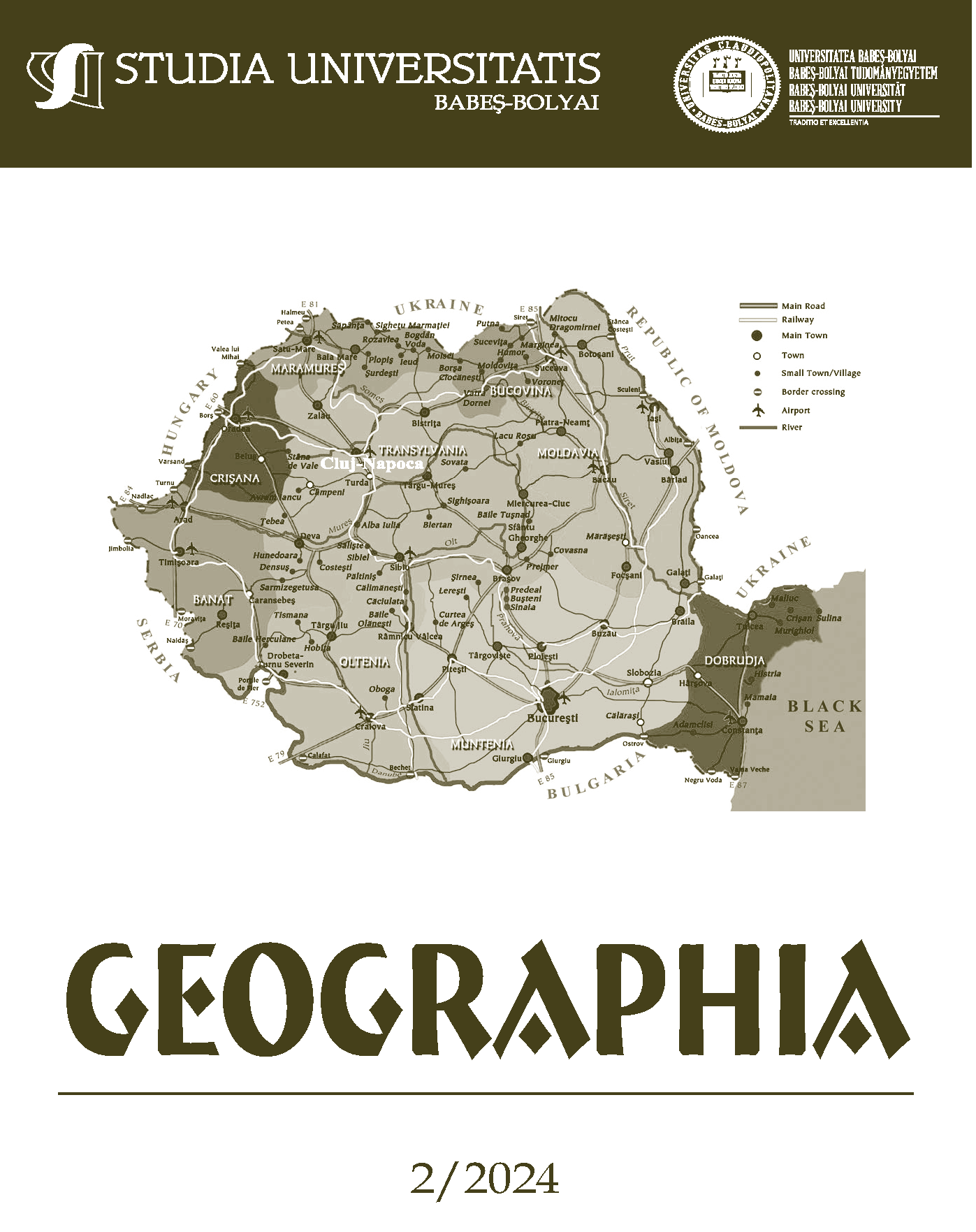Bengal: From a Periphery to the Heartland of South Asia
DOI:
https://doi.org/10.24193/subbgeogr.2024.2.07Keywords:
colonialism, Raj, British Empire, independence, PartitionAbstract
Bengal: from a Periphery to the Heartland of South Asia. The historical province of Bengal, one of South Asia’s most densely populated areas from ancient times, was mainly a periphery within the states that succeeded on the subcontinent until the late Middle Ages. Conquered in the 16th century by the Mughals, an important part of its population embraced Islam. The arrival of the Europeans put the province into the frontline of international trade. In the 18th century Bengal became the center of the British Raj, which gradually extended to the whole of India, with its capital at Calcutta until 1911. In the first half of the 20th century, Bengal became one of the main centers of anti-British resistance. However, when India finally became independent, the unfortunate partition of the former British colony resulted in the second partition of Bengal too, the consequences of which are visible until today, especially taking into consideration the mass of refugees which flowed from Eastern Bengal to India. Though West Bengal and especially the great urban agglomeration of Kolkata remains one of India’s most important industrial and commercial zones and is quickly developing today, the region was for decades lagging behind other states, while Kolkata lost its primacy (behind Delhi and Mumbai) among the great cities of India.
References
1. Chatterji, J. (2024), Shadows at Noon. The South Asian Twentieth Century, Vintage Books, Penguin Random House, Dublin.
2. Dalrymple, W. (2019), Anarchy. The Relentless Rise of the East India Company, Bloomsbury Publishing, London/New Delhi.
3. Das, N. (2023), Courting India. England, Mughal India and the Origins of Empire, Bloomsbury Publishing, London/New Delhi.
4. Dupuis, J. (1963), Histoire de l’Inde, Petite Bibliothèque Payot, Paris.
5. Eaton, R. M. (2020), India in the Persianate Age 1000-1765, Penguin Random House, London.
6. Elkins, C. (2023), Legacy of Violence. A history of the British Empire, Vintage Books, Penguin Random House, Dublin.
7. Gascoigne, B. (2002), A Brief History of the Great Moghuls, Robinson, London.
8. Hunt, T. (2015), Calcutta, in: Ten Cities That Made an Empire, Penguin Random House, London.
9. James, L. (1998), Raj. The Making and Unmaking of British India, Abacus, Little, Brown Book Group, London.
10. Joseph, T. (2021), Early Indians. The Story of Our Ancestors and Where We Came From. Juggernaut Books, New Delhi.
11. Kalmár, Gy. (1974), A felrobbantország. Pakisztán-Bengália (The Exploded Country. Pakistan-Bengal), Gondolat, Budapest.
12. Kalmár, Gy. (1985), Indira Gandhi, Kossuth Könyvkiadó, Budapest.
13. Keay, J. (2010), India. A History: From the Earliest Civilisations to the Boom of the Twenty-First Century, Harper Press, London.
14. Kovács, Cs. M. (2021), Mini-Oceania sau Indioceania? Importanța geostrategică a insulelor din Oceanul Indian (Mini-Oceania or Indioceania? The geostrategic importance of the islands in the Indian Ocean), Geographia Napocensis nr. 1.
15. Lieven, A. (2012), Pakistan. A Hard Country, Penguin Books, London.
16. Mackintosh-Smith, T. (ed.,2002), The Travels of Ibn Battutah, Picador, Dublin.
17. Mithen, S. (2012), After the Ice. A Global Human History 20000-5000 BC, Weidenfeld & Nicholson, London.
18. Read, A., Fisher, D. (1998). The Proudest Day: India's Long Road to Independence. New York: W. W. Norton & Company.
19. Reich, D. (2019), Who We Are and How We Got Here, Oxford University Press.
20. Roberts, A. (2017), Tamed. Ten Species That Changed the World, Windmill Books, Penguin Random House, London.
21. Sengupta, N. (2012), Land of Two Rivers. A History of Bengal from the Mahabharata to Mujib, Penguin Random House, London.
22. Thapar, R. (2002), The Penguin History of Early India from the Origins to AD 1300, Penguin Random House India, Gurugram, Haryana.
23. Veevers, D. (2023), The Great Defiance. How the world took on the Bristish Empire, Penguin Random House UK, London.
24. Walsh, D. (2021), The Nine Lives of Pakistan. Dispatches from a Divided Nation, Bloomsbury Publishing, London/New Delhi.
25. White-Spunner, B. (2017), Partition. The Story of Indian Independence and the Creation of Pakistan in 1947, Simon & Schuster, London/New Delhi.
Downloads
Published
How to Cite
Issue
Section
License
Copyright (c) 2024 Studia Universitatis Babeș-Bolyai Geographia

This work is licensed under a Creative Commons Attribution-NonCommercial-NoDerivatives 4.0 International License.


 ©Studia Universitatis Babeş-Bolyai Geographia. Published by Babeș-Bolyai University.
©Studia Universitatis Babeş-Bolyai Geographia. Published by Babeș-Bolyai University.